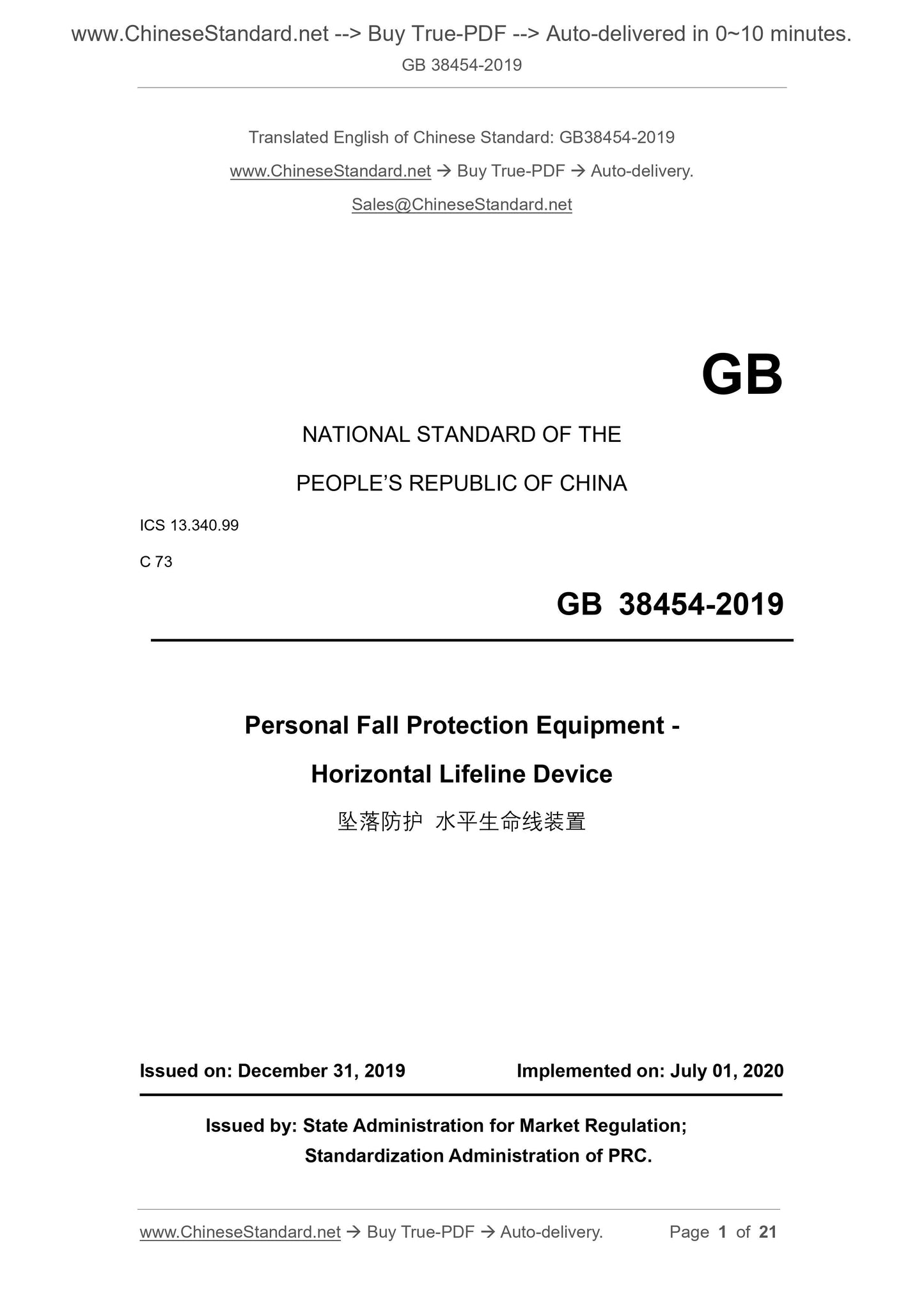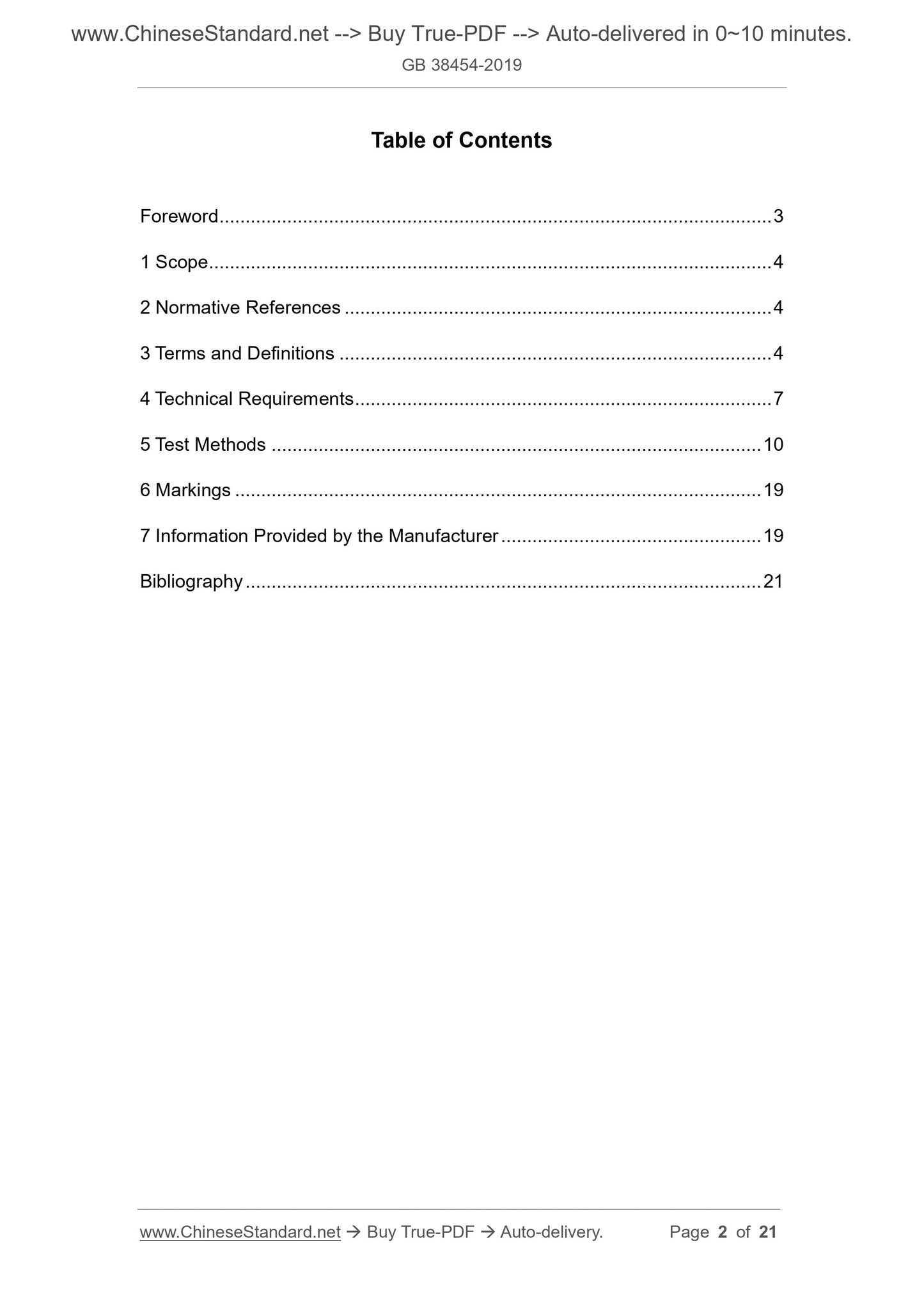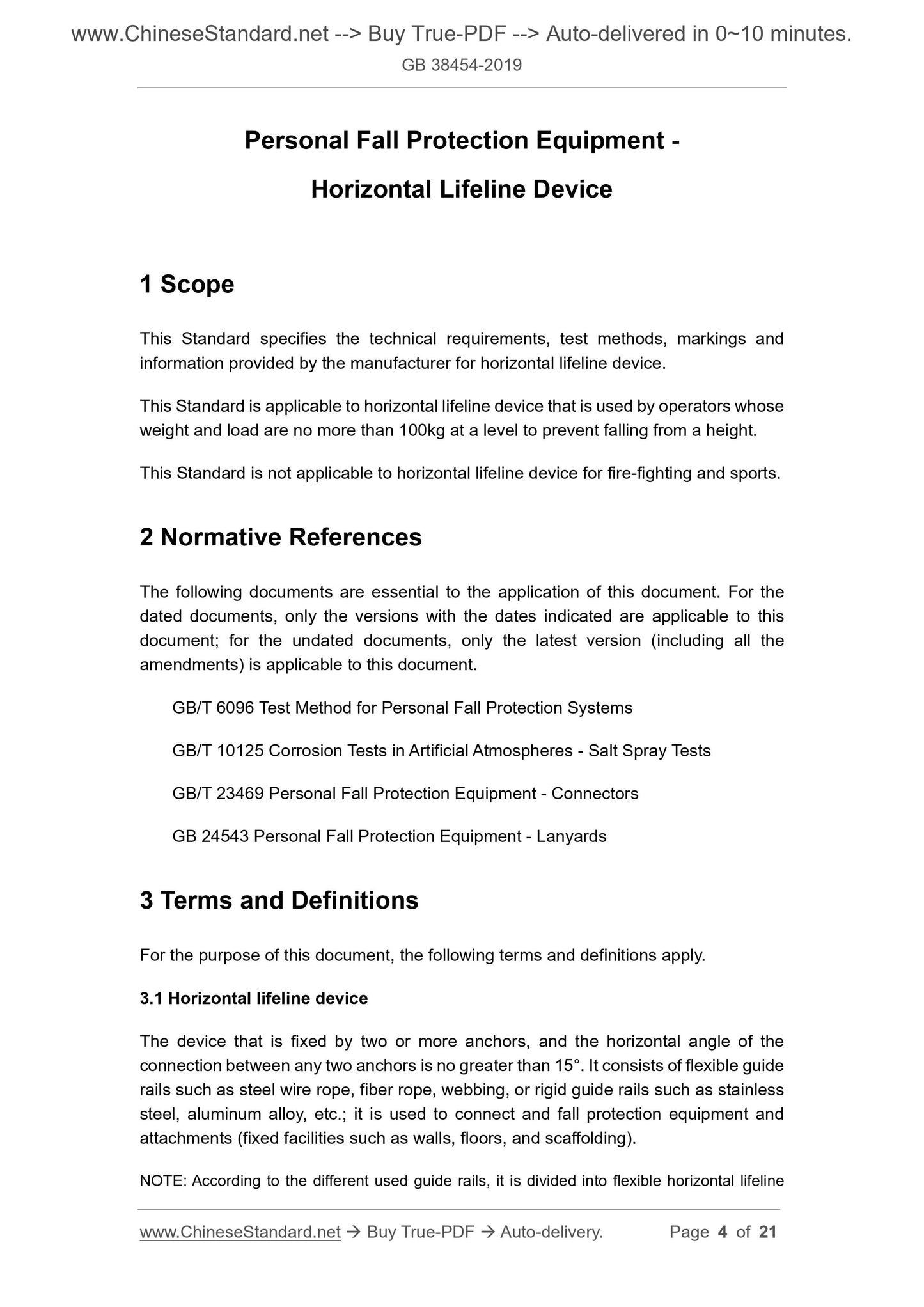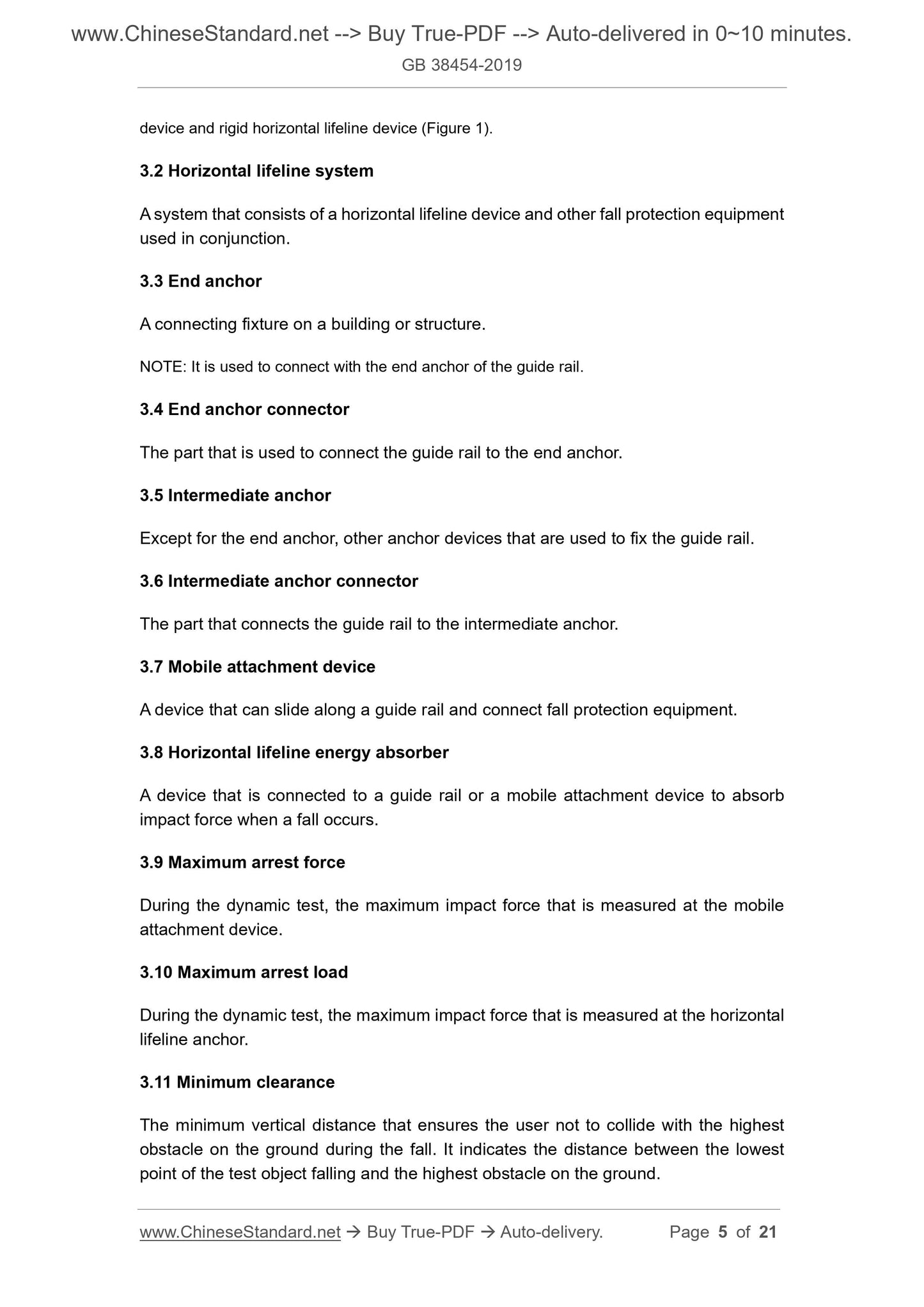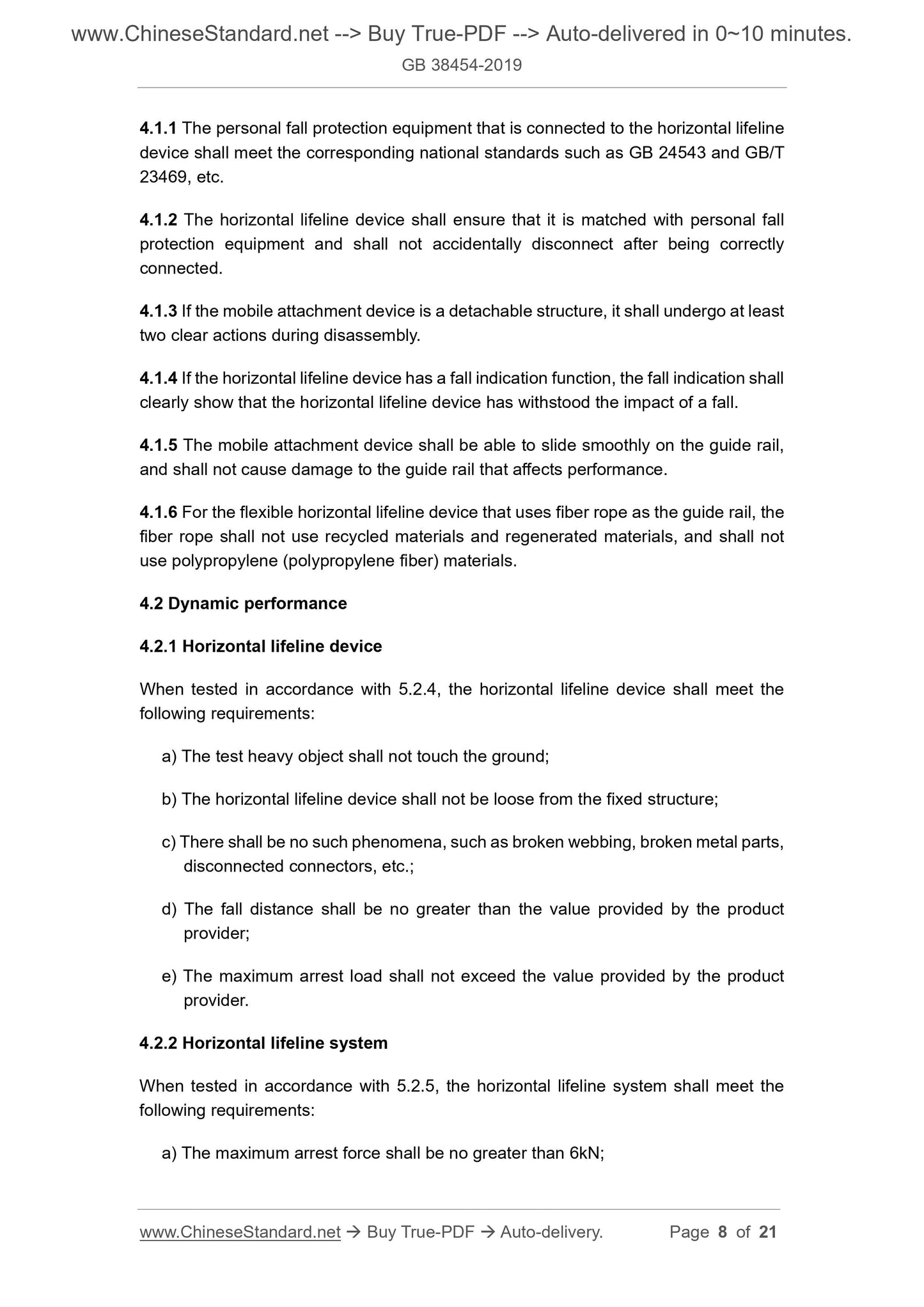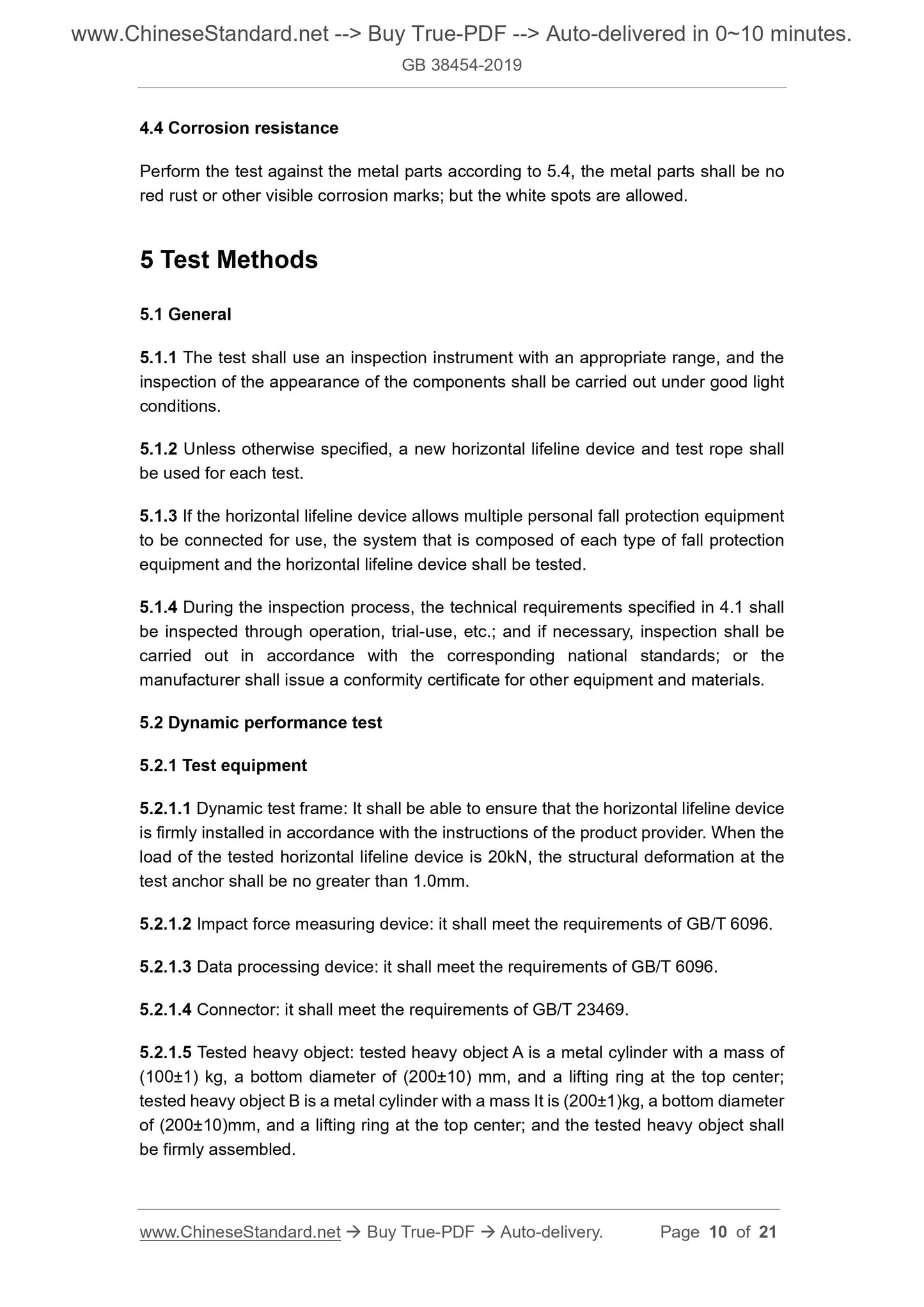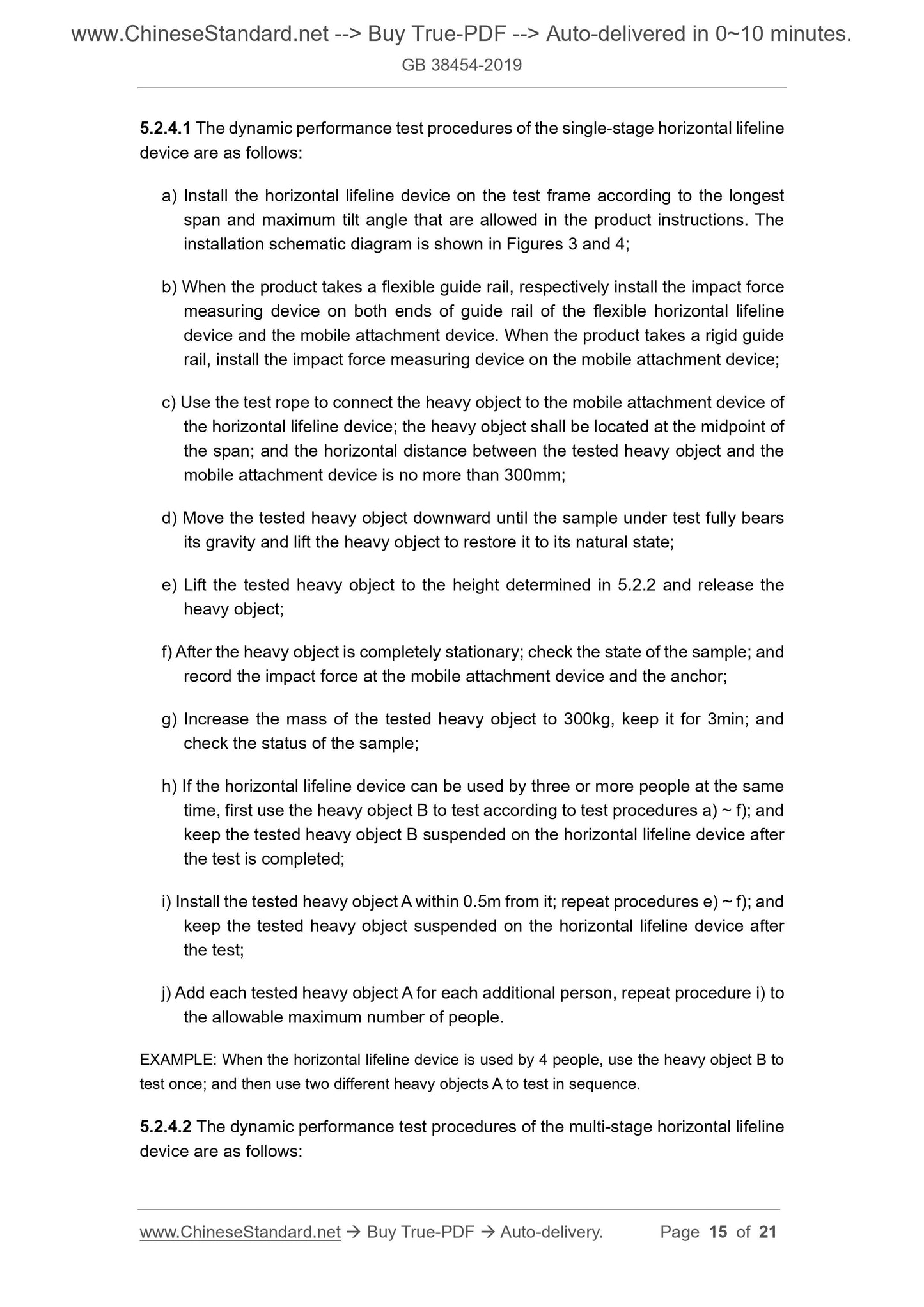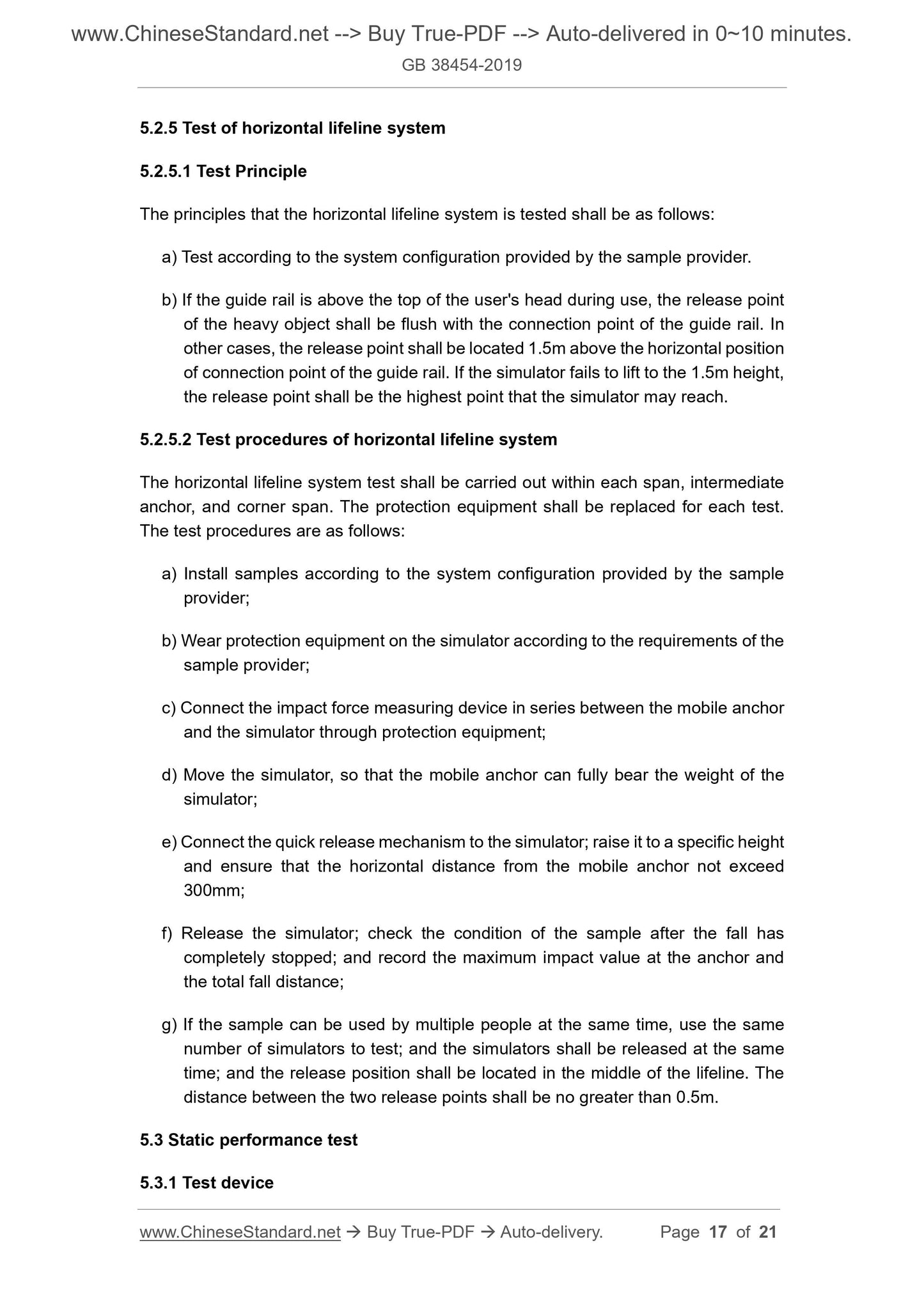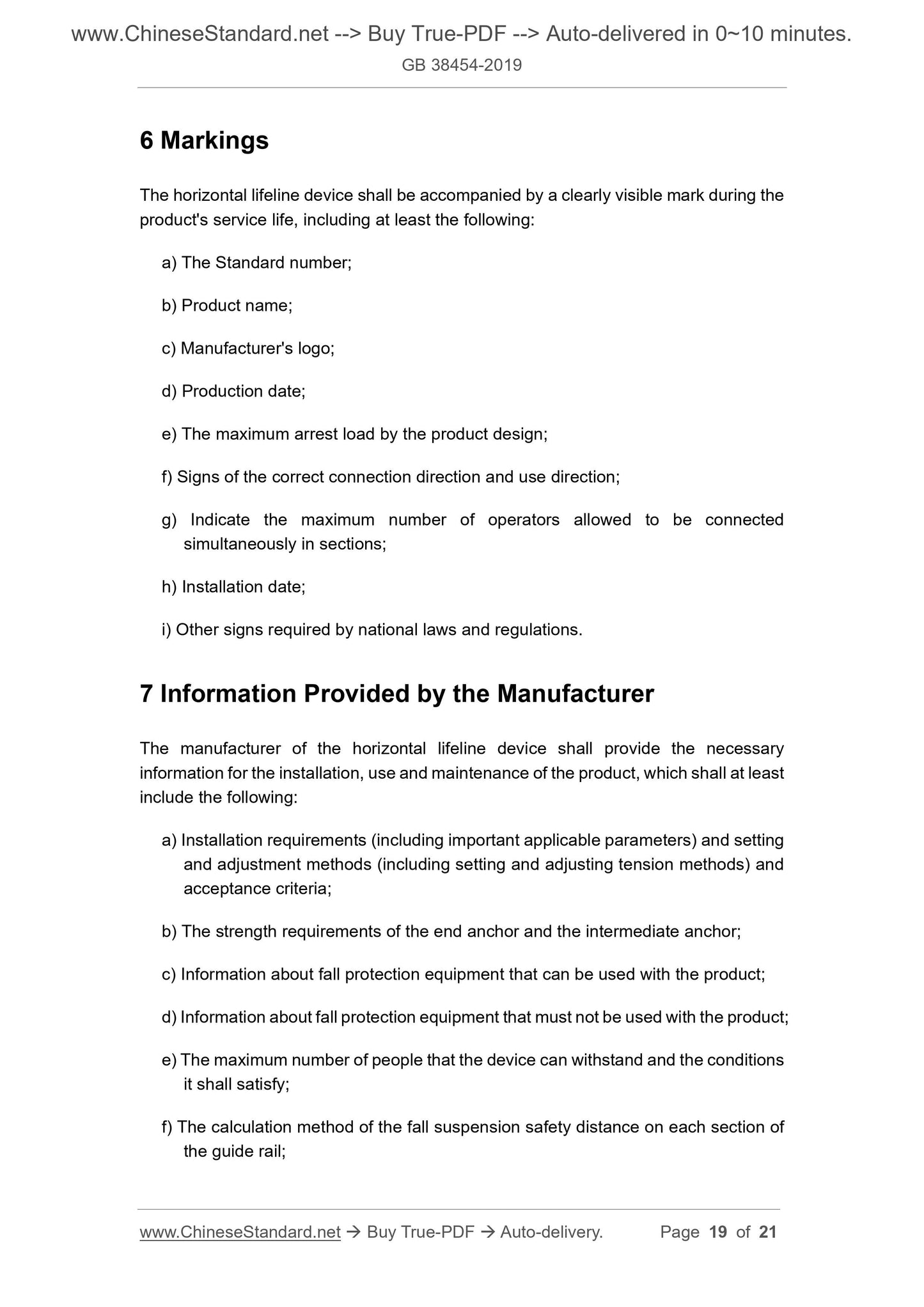1
/
of
9
www.ChineseStandard.us -- Field Test Asia Pte. Ltd.
GB 38454-2019 English PDF
GB 38454-2019 English PDF
Regular price
$205.00
Regular price
Sale price
$205.00
Unit price
/
per
Shipping calculated at checkout.
Couldn't load pickup availability
GB 38454-2019: Personal Fall Protection Equipment - Horizontal Lifeline Device
Delivery: 9 seconds. Download (and Email) true-PDF + Invoice.Get Quotation: Click GB 38454-2019 (Self-service in 1-minute)
Newer / historical versions: GB 38454-2019
Preview True-PDF
Scope
This Standard specifies the technical requirements, test methods, markings andinformation provided by the manufacturer for horizontal lifeline device.
This Standard is applicable to horizontal lifeline device that is used by operators whose
weight and load are no more than 100kg at a level to prevent falling from a height.
This Standard is not applicable to horizontal lifeline device for fire-fighting and sports.
Basic Data
| Standard ID | GB 38454-2019 (GB38454-2019) |
| Description (Translated English) | Personal Fall Protection Equipment - Horizontal Lifeline Device |
| Sector / Industry | National Standard |
| Classification of Chinese Standard | C73 |
| Classification of International Standard | 13.340.99 |
| Word Count Estimation | 15,153 |
| Date of Issue | 2019-12-31 |
| Date of Implementation | 2020-07-01 |
| Issuing agency(ies) | State Administration for Market Regulation, China National Standardization Administration |
Share
